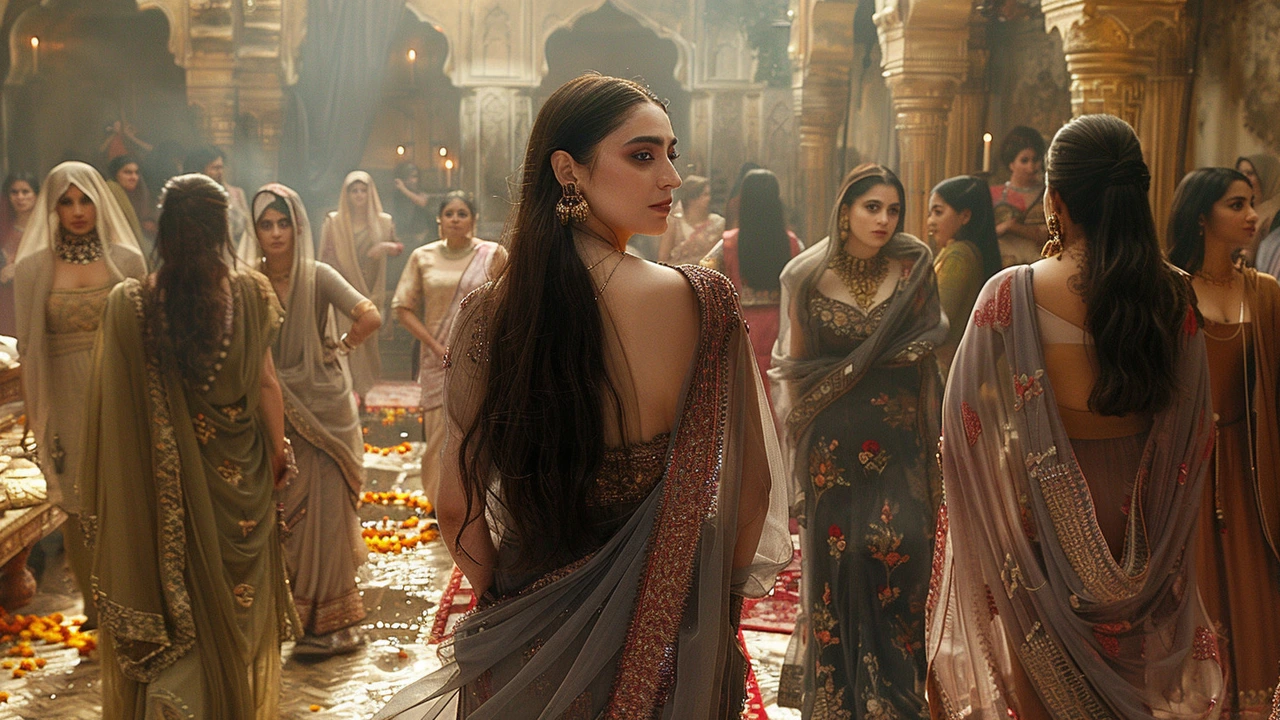
Introduction to Heeramandi
Sanjay Leela Bhansali, a name synonymous with grandiose and visually stunning Indian cinema, returns with a compelling new series titled Heeramandi. Now streaming on Netflix, this eight-episode drama takes audiences deep into the historical settings of Lahore’s courtesan quarters, known as Heeramandi. Bhansali, known for his rich narrative and aesthetic filmmaking, weaves a tale around the women of Shahi Mahal during a bygone era. These women, referred to as the queens of Lahore, navigate a world where beauty and tragedy intertwine intricately.
The World of Heeramandi
The setting is Lahore, once a thriving nucleus of cultural sophistication and now the backdrop for Bhansali's latest masterpiece. Heeramandi, as depicted in the series, is a place of great paradoxes. On one hand, it's drenched in the opulence of heavy jewellery, luxurious fabrics, and sumptuous decor. On the other, it harbors the dark realities of the courtesans' lives — abuse, manipulation, and exploitation shadowing their everyday existence. These elements are captured with Bhansali’s characteristic flair for drama and attention to detail, making each frame a cinematic tableau.
Character Dynamics and Plot Development
Heeramandi focuses on several key characters, portrayed by stellar actresses like Manisha Koirala, Aditi Rao Hydari, Sonakshi Sinha, Sanjeeda Sheikh, and Richa Chadha. Each character is finely etched, reflecting the complexities of life in Heeramandi. These women are portrayed not just as victims of their circumstances but also as crafty navigators of their destiny within the constraints imposed upon them. The narrative dives into the depths of their relationships, filled with rivalry, solidarity, love, and betrayal. Bhansali's script emphasizes not only the women’s dependence on men due to societal structures but also their cunning and strength in manipulating these very structures for survival and revenge.
Thematic Elements and Visual Style
The thematic exploration of wealth in Heeramandi reveals a significant irony. The courtesans, dressed in their finery, symbolize wealth and yet, possess little to no ownership over their riches or fate. This juxtaposition is a commentary on the illusion of power and the harsh reality of their impotence in societal and economic frameworks. Visually, the series is a feast for the eyes. Each scene is meticulously crafted, with lush costumes and elaborate sets. However, the recurring motifs of tragedy and cruelty might evoke a sense of unease, stirring a contemplative dialogue among viewers about the narrative’s intense emotional landscape.
Viewer's Reception and Critique
Since its release on Netflix, Heeramandi has sparked various discussions. Viewers and critics alike have noted how the series, while visually enchanting, does not shy away from portraying the grave realities of the courtesans' lives. This bold storytelling approach, typical of Bhansali’s cinematic ethos, prompts a significant introspection about historical narratives and their relevance to contemporary issues of gender and power dynamics. While some viewers might find the unrelenting depiction of misogyny and suffering overwhelming, others appreciate the authenticity and depth this adds to the story.
Conclusion
Sanjay Leela Bhansali’s Heeramandi is more than just a historical drama. It is a poignant study of power, gender, and resilience set against the backdrop of an opulent yet oppressive era. Through his artistic lens, Bhansali invites the audience to explore these diametric worlds, urging a reflective understanding of the past and its echoes in the present. As the series continues to unfold on Netflix, it remains a significant addition to Bhansali’s repertoire and a must-watch for those who appreciate cinema that marries beauty with the complexity of human emotions.